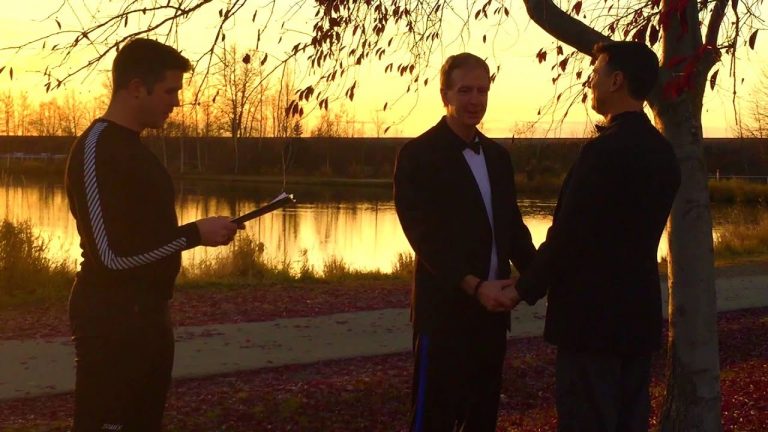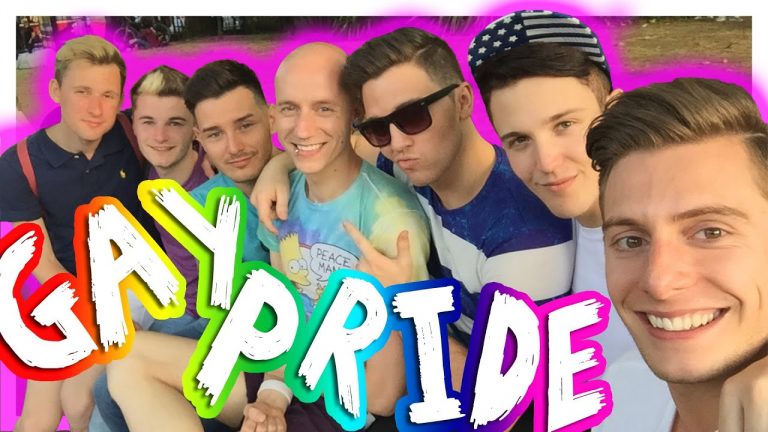The “City of Brotherly Love” makes is ideal for a summertime visit
No city in the United States played a more critical role in the nation’s founding than Philadelphia, and this progressive metropolis of about 1.5 million people has also been a pioneer in gay and lesbian rights. The Philadelphia Lesbian and Gay Task Force, formed in 1978, guided passage of the 1982 Philadelphia Fair Practices Act, one of the country’s earliest gay civil rights measures, and countless other gay-positive laws and policies have been passed or implemented since then. Additionally, the city’s office of tourism was one of the first to enthusiastically court gay and lesbian visitors. But apart from a warm welcome, what else about the “City of Brotherly Love” makes it ideal for a summertime visit?
Here’s a list of just a few notable things to see or do, chronicled in no particular order, that make Philadelphia so appealing:
1. Rittenhouse Square Park
City-planning guru Jane Jacobs called this tiny patch of paradise the most successful urban park in the United States; indeed, Rittenhouse Square is picturesque, socially diverse, highly safe, and largely unsullied by post-World War II architecture. Off the Square’s southeast corner is the prestigious Curtis Institute of Music, where Samuel Barber, Leonard Bernstein, and Ned Rorem studied, as well as the Philadelphia Art Alliance, which presents outstanding exhibits and art shows.
The square is also the site of the gay-friendly Rittenhouse Hotel, a sumptuous 98-room property that hosted the cast of the movie Philadelphia during filming. Rooms here are downright cavernous, averaging more than 500 square feet, and all have large windows framing the park or the city’s dramatic skyline. A short walk from the square, romantic Astral Plane has been a favorite gay-date restaurant since it opened in 1973 (it’s also drawn such fab celebs as Bette Midler, Liza Minnelli, Barry Manilow, and Tommy Tune). From the eclectic menu you might choose slow-roasted pork shank with asiago potatoes, or grilled scallops with lemongrass-and-ginger butter. It’s the perfect spot for a special dinner.
2. Clubbing in the Gayborhood
The city’s compact gay district, nicknamed the Gayborhood, contains the bulk of the Philadelphia’s gay bars as well as quite a few gay-popular shops, restaurants, and hotels. It’s right in the center of downtown, about as convenient to attractions, transportation, and entertainment as any gay neighborhood in America. Highlights include the city’s premier lesbian club, Sisters, a three-floor establishment with a restaurant and disco, and long-running Woody’s, a youthful video bar that pulls in a mostly male, somewhat cruisy, stand-and-model crowd. The ultra-swank Bump Lounge offers a more cosmopolitan ambience and is a great place to chat with friends, sip martinis, and dine on fine contemporary cuisine. Serious revelers head to Pure, the city’s top gay warehouse disco. Tavern on Camac is a charming gay piano bar, with a cozy restaurant in the basement. Other friendly options in the neighborhood include Uncles, popular with players on Philly’s lesbian and gay softball teams; 12th Air Command, a cavernous cruise bar with fun drag shows and dance parties; and the Venture Inn, the oldest gay bar in town, set in a historic tavern.
There are plenty of places to stay nearby. Particularly charming and well-priced, the gay-owned Alexander Inn is a fine boutique hotel right in the center of the action. The 48 rooms have a contemporary look with sleek furnishings and muted tones – other bonuses include satellite TV, Wi-Fi, and Continental breakfast buffet. Practically across from Woody’s, the Holiday Inn Express Midtown has well-kept rooms and reasonable prices. Another excellent choice that’s just steps from gay nightlife is the upscale Doubletree Philadelphia, a handsome, contemporary high-rise whose rooms afford superb city views. The hotel is a block away from the Kimmel Center for the Performing Arts, a magnificent 5-year-old space designed by seminal architect Rafael Vinoly.
3. Brunch at the White Dog
There’s nothing more relaxing on a sunny weekend morning or afternoon than enjoying brunch at a lively restaurant with great food and, ideally, some outside seating. Near the campus of the University of Pennsylvania, the gay-popular White Dog Cafe fits the bill perfectly. This bric-a-brac-filled eatery set in three adjacent Victorian town houses serves such delicious brunch fare as lemon-mascarpone pancakes with raspberry-maple syrup, and black-pepper-seared organic beef salad with crumbled blue cheese and balsamic vinaigrette. Also keep in mind that Astral Plane restaurant, mentioned above, serves a terrific brunch on Sundays.
4. Cheesesteaks at Geno’s or Pat’s
It may sound a bit cliched to search out a cheesesteak in this city that’s famous for them. But you’re here – and you may as well have a bite of Philadelphia’s quintessential treat. Many connoisseurs favor two neighboring joints a bit south of downtown, Geno’s and Pat’s (of course, plenty of ardent critics deride these two places as tourist traps and prefer other holes-in-the-wall around town). Pat’s is said to have invented this delicacy in 1930 – the restaurant serves ’em slathered with Cheez Whiz and fried onions, and the steak is finely chopped. Across the street at Geno’s, the steaks are not shredded, and instead of Cheez Whiz, they come topped with provolone. Which one is better? You be the judge.
5. The Philadelphia Museum of Art
One of the nation’s most esteemed art institutions, the Philadelphia Museum of Art sits within a dramatic Greek Revival building amid 10 landscaped acres. Standouts in the permanent collection include contemporary masterpieces by Picasso, Braque, and Matisse as well as works by a number of post-World War II artists. The outstanding Marcel Duchamp collection includes renditions of his Nude Descending a Staircase (The “nude,” people often overlook, is male). Check out the fine collection of photos and paintings by gay artist Thomas Eakins of young, virile men crewing and boating on the nearby Schuylkill River. There’s also an excellent display on Shaker furniture.
And that’s just scratching the surface. The museum is adjacent to lushly landscaped Fairmount Park, which straddles the Schuylkill River and comprises nearly 9,000 acres of picturesque gardens, walkways, and biking and bridle paths, plus about a dozen historic (mostly Colonial) mansions, which are open to the public.
6. Reading Terminal Market
For a century, the more than 80 stalls at the cavernous Reading Terminal Market have sold tantalizing, market-fresh foods, ranging from local produce to international dishes from around the world. There are too many great dining options to mention, but try not to miss the regional Mexican fare at 12th Street Cantina, the deli items at Salumeria, Amish treats at Beiler’s Bakery, ice cream at Bassetts, the Pennsylvania Dutch breakfasts at Dutch Eating Place, Italian hoagies at Carmen’s, and heavenly mac-and-cheese at Delilah’s. But wherever you end up eating, you won’t go wrong – around every corner you’ll see, smell, and have the chance to taste delicious food.
Related: A Gay Traveler’s Guide to Amsterdam
7. Independence National Historic Park
Even if you’re not a big history buff, you can’t visit Philadelphia and not soak up at least a whiff or two of the city’s amazingly rich heritage. The Old City neighborhood contains the bulk of the pre-1800s attractions, most them centered around Independence National Historical Park, which celebrates the very birth of our nation. Most famous is the Liberty Bell Pavilion, site of America’s beloved and cracked 2,000-pound bell. Although commonly thought to have played a significant role in Colonial history, the Liberty Bell actually rose to prominence during the 1830s as a symbol of the movement to abolish slavery.
Nearby Independence Hall is where the Second Continental Congress met in 1775, the Declaration of Independence was adopted in 1776, the Articles of Confederation were signed in 1778, and the Constitution was adopted in 1787. It was also the site of the city’s first major civil rights demonstrations (which included the concerns of lesbians and gays). The list of important sights within the park goes on and on – you could easily spend a full day here.
8. Giovanni’s Room
In an age when independent bookstores are struggling to keep their doors open, this wonderful LGBT bookstore that’s been going strong since 1973 is a true marvel. The homey two-floor shop on the edge of the Gayborhood has hundreds of queer titles plus a wealth of feminist works. There are several community bulletin boards, a wide range of periodicals, and a handful of skin mags, too. The staff is extremely helpful and has a real knack for finding out-of-print, import, or hard-to-find titles.
9. Coffee Klatch
Arguably the gayest java joint in town, Village Coffee House anchors the Gayborhood, offering caffeine addicts a cozy interior space as well as a charming enclosed patio that overlooks a neighborhood garden. Here you can sip specialty drinks (made with Fair Trade coffee beans), ogle cute patrons, and nosh on cookies, cheesecake, and tasty sandwiches.
A short walk away, the gay-friendly cafe More Than Just Ice Cream has been a fixture in the ‘hood for years, serving up what some insist is the best apple pie in world (sorry, Mom…). As the name suggests, you can also order ice cream (and delicious sundaes, specifically), but there are also fresh sandwiches, soul-warming soups, and plenty of coffee and tea drinks. It’s the best place in town to while away a rainy Sunday afternoon.
Related: Philly Escapes: New Hope, the Brandywine Valley, and Winterthur







